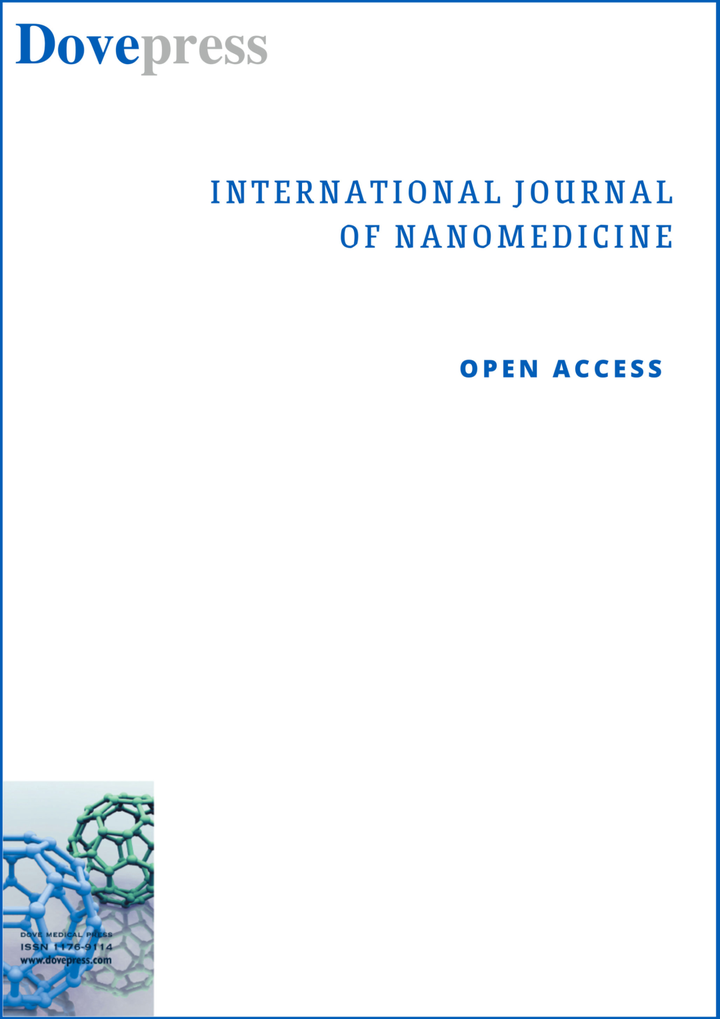Polyvinyl Alcohol Capped Silver Nanostructures for Fortified Apoptotic Potential Against Human Laryngeal Carcinoma Cells Hep-2 Using Extremely-Low Frequency Electromagnetic Field
IF 6.6
2区 医学
Q1 NANOSCIENCE & NANOTECHNOLOGY
引用次数: 0
Abstract
Purpose: : Polyvinyl alcohol-capped silver nanostructures (cAgNSs) were investigated in order to enhance the cytotoxicity, pro-apoptotic, and oxidant patterns of in human laryngeal carcinoma Hep-2 cells by employing a 50 mT electromagnetic field (LEMF) for 30 min.Methods: Wet chemical reduction was used to synthesize the cAgNSs, and after they had been capped with polyvinyl alcohol, they were specifically examined for particle size analysis and structural morphology. To visualize how the silver may attach to the protein targets, a molecular docking study was conducted. Estimation of cytotoxicity, cell cycle progression supported by mRNA expression of three apoptotic-promoting genes and one apoptotic-resisting.
Results: Particle size analysis results were a mean particle size of 157.3± 0.5 nm, zeta potential value of − 29.6 mV± 1.5 mV, and polydispersity index of 0.31± 0.05. Significantly reduction of IC50 against Hep-2 cells by around 6-fold was concluded. Also, we obtained suppression of the proliferation of Hep-2 cells, especially in the G0/G1 and S phases. Significant enhanced mRNA expression revealed enhanced induced CASP3, p53, and Beclin-1 mediated pro-apoptosis and induced NF-κB mediated autophagy in Hep-2 cells. Augmented levels of GR, ROS and MDA as oxidative stress biomarkers were also obtained. HE staining of Hep-2 cells exposed to cAgNSs and LEMF confirmed the enhanced apoptotic potential comparatively.
Conclusion: By conclusion, the developed nano-sized structures with the aid of extremely-low frequency electromagnetic field were successful to fortify the anti-cancer profile of cAgNSs in Hep-2 cells.
Keywords: electromagnetic field, silver nanoparticles, apoptosis, laryngeal carcinoma
利用极低频电磁场增强银纳米结构对人类喉癌细胞 Hep-2 的凋亡潜力
目的: :研究了聚乙烯醇封端的银纳米结构(cAgNSs),通过使用 50 mT 电磁场(LEMF)30 分钟,增强人喉癌 Hep-2 细胞的细胞毒性、促凋亡和氧化模式:方法:采用湿化学还原法合成 cAgNSs,用聚乙烯醇封盖后,对其进行粒度分析和结构形态学检测。为了解银如何附着在蛋白质靶标上,进行了分子对接研究。通过三个促进细胞凋亡基因和一个抑制细胞凋亡基因的 mRNA 表达来评估细胞毒性和细胞周期进程:粒度分析结果:平均粒度为 157.3±0.5 nm,zeta 电位值为 - 29.6 mV±1.5 mV,多分散指数为 0.31±0.05。对 Hep-2 细胞的 IC50 值显著降低了约 6 倍。此外,我们还抑制了 Hep-2 细胞的增殖,尤其是在 G0/G1 和 S 期。显著增强的 mRNA 表达表明,诱导 CASP3、p53 和 Beclin-1 介导的促凋亡和诱导 NF-κB 介导的自噬在 Hep-2 细胞中得到了增强。氧化应激生物标志物 GR、ROS 和 MDA 的水平也有所提高。对暴露于 cAgNSs 和 LEMF 的 Hep-2 细胞进行 HE 染色,证实其凋亡潜能相对增强:总之,借助极低频电磁场开发的纳米结构成功地增强了 cAgNSs 在 Hep-2 细胞中的抗癌作用。关键词:电磁场;银纳米粒子;细胞凋亡;喉癌
本文章由计算机程序翻译,如有差异,请以英文原文为准。
求助全文
约1分钟内获得全文
求助全文
来源期刊

International Journal of Nanomedicine
NANOSCIENCE & NANOTECHNOLOGY-PHARMACOLOGY & PHARMACY
CiteScore
14.40
自引率
3.80%
发文量
511
审稿时长
1.4 months
期刊介绍:
The International Journal of Nanomedicine is a globally recognized journal that focuses on the applications of nanotechnology in the biomedical field. It is a peer-reviewed and open-access publication that covers diverse aspects of this rapidly evolving research area.
With its strong emphasis on the clinical potential of nanoparticles in disease diagnostics, prevention, and treatment, the journal aims to showcase cutting-edge research and development in the field.
Starting from now, the International Journal of Nanomedicine will not accept meta-analyses for publication.
 求助内容:
求助内容: 应助结果提醒方式:
应助结果提醒方式:


